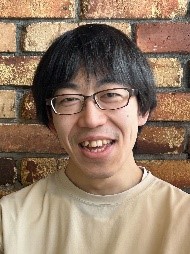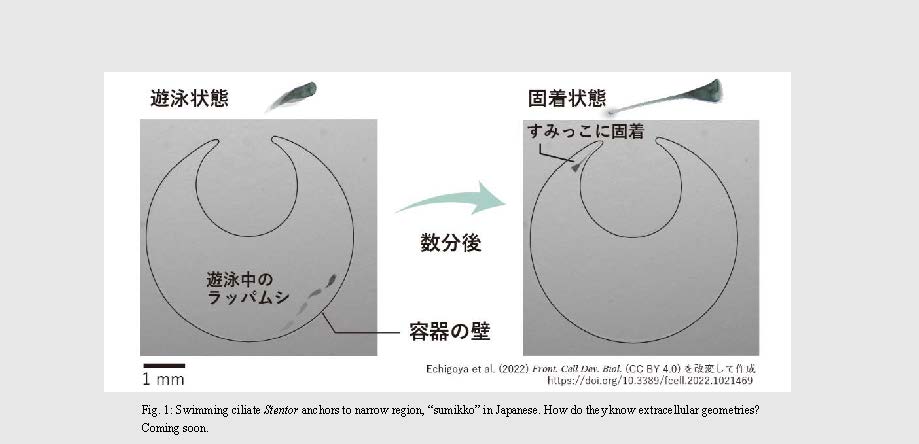
RIES
Research Institute for Electronic Science, Hokkaido University
北海道大学
電子科学研究所

LAST UPDATE 2024/08/06
-
研究者氏名
Researcher Name越後谷駿 Syun ECHIGOYA
特任助教(アンビシャス特別助教) Specially-Appointed Asst. Prof. -
所属
Affiliation北海道大学 電子科学研究所
知能数理研究分野
Research Institute for Electronic Science, Hokkaido University
Mathematical and Physical Ethology Laboratory -
研究キーワード
Research Keywords原生生物
動物行動学
空間把握
protists
ethology
exploration
- 研究テーマ
Research Subject -
単細胞生物ソライロラッパムシの固着場所探索行動
Exploring behaviour in unicellular organism, Stentor
研究の背景 Background of the Research
単細胞生物は環境中のどのような情報を使って空間探索しているのでしょうか?彼らの行動は一見単純ですが、複雑な環境を生き抜くためには何らかの生存戦略が必要なはずです。例えば、環境に応じて遊泳と固着の2状態を切り替える単細胞ソライロラッパムシは、「すみっこ」空間に好んで固着します。ただ、たった一細胞でどのように「すみっこ」を選んでいるのかは謎に包まれています。
How do unicellular organisms utilize environmental cues to navigate their surroundings? Although their behaviours seem simple, these organisms must have some survival strategies for living in harsh environments. To understand how they “know” spatial information, I use microfabrication techniques to design controlled micro-environments.
研究の目標 Research Objective
我々は細胞と周囲の構造物との相互作用に焦点をあて、細胞スケールのミクロな環境をデザインすることで、単細胞がもつ空間把握能力の理解を目指しています。ミクロな構造物を動かしたり、構造物の形を変えた際に見られるラッパムシの応答から、メカニズム解明に迫ります。単細胞生物とのコミュニケーション?(インタラクション)が実現できた先に面白い世界があるのでは!そんな想いを形にしていきます。
The trumpet-shaped unicellular organism, Stentor coeruleus, switches between swimming and anchoring based on environmental conditions. Stentor selects narrow spaces as anchoring sites without the need for visual cues. I’m currently investigating the mechanism behind this selection behaviour, focusing on collisions with surrounding structures.
研究図Figures

Coming soon.
論文発表 / Publications
Syun Echigoya, Katsuhiko Sato, Osamu Kishida, Toshiyuki Nakagaki, Yukinori Nishigami. Switching of behavioral modes and their modulation by a geometrical cue in the ciliate Stentor coeruleus. Frontiers in Cell and Developmental Biology, 10, 1021469, 2022.doi:10.3389/fcell.2022.1021469
研究者連絡先 / HP
- stentor.rappa
 gmail.com
gmail.com - https://researchmap.jp/stentor